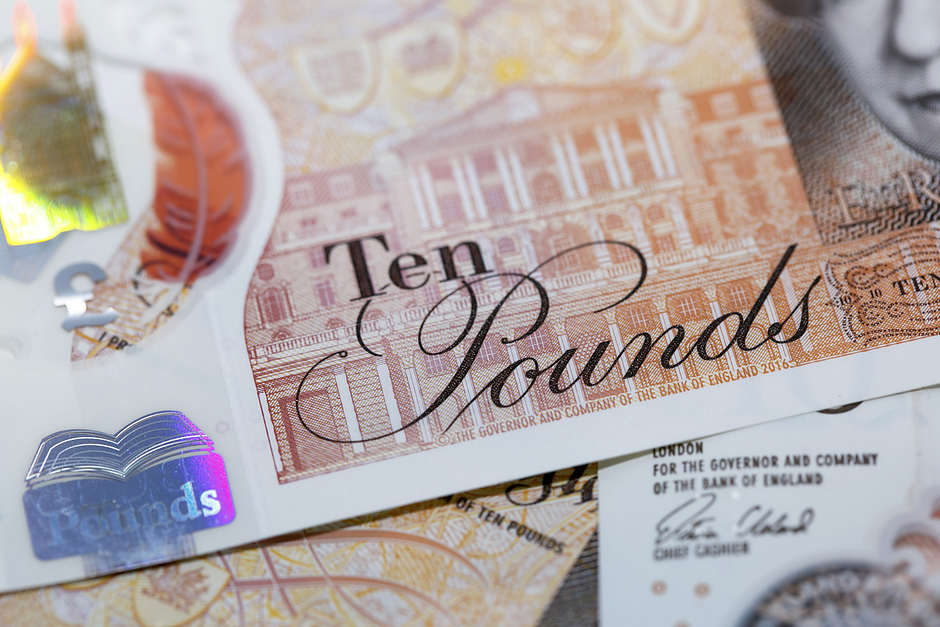GBP/USD softens to near 1.3000 ahead of UK Autumn Budget
- GBP/USD edges lower to near 1.3010 in Wednesday’s early Asian session.
- Job openings fell more than expected in September.
- Traders brace for the UK’s Autumn Budget, advanced US Q3 GDP data, which will be released on Wednesday.

The GBP/USD pair weakens around 1.3010 despite the consolidation of the US Dollar (USD) during the early Asian session on Wednesday. Investors await the release of the UK’s Autumn Budget, the US October ADP Employment Change and the advanced US Q3 Gross Domestic Product (GDP), which are due later on Wednesday.
The US Bureau of Labor Statistics (BLS) reported in the Job Openings and Labor Turnover Survey (JOLTS) on Tuesday that Job openings came in at 7.443 million, followed the 7.861 million (revised from 8.04 million) seen in August, and came in below the market expectation of 7.99 million. This report might prompt the Federal Reserve (Fed) dovish bets and weigh the Greenback against the Pound Sterling (GBP).
The Fed is likely to cut its key interest rate by 25 basis points (bps) on November 7, according to all 111 economists in a Reuters poll, with over a 90% majority expecting another quarter-percentage-point move in the December meeting.
On the UK’s front, the government is set to deliver Labour’s first Budget in almost 15 years on Wednesday. Rachel Reeves, the UK Chancellor of the Exchequer, might be preparing to unveil £40 billion in tax hikes and spending cuts overall. Employer National Insurance contributions, capital gains tax, and inheritance tax allowances are all possible targets.
Commerzbank analysts noted that if the budget combines austerity with hope of tackling long-term investment, “This should be positive for the pound as it would strengthen the U.K.’s long-term growth potential.”
Pound Sterling FAQs
The Pound Sterling (GBP) is the oldest currency in the world (886 AD) and the official currency of the United Kingdom. It is the fourth most traded unit for foreign exchange (FX) in the world, accounting for 12% of all transactions, averaging $630 billion a day, according to 2022 data. Its key trading pairs are GBP/USD, also known as ‘Cable’, which accounts for 11% of FX, GBP/JPY, or the ‘Dragon’ as it is known by traders (3%), and EUR/GBP (2%). The Pound Sterling is issued by the Bank of England (BoE).
The single most important factor influencing the value of the Pound Sterling is monetary policy decided by the Bank of England. The BoE bases its decisions on whether it has achieved its primary goal of “price stability” – a steady inflation rate of around 2%. Its primary tool for achieving this is the adjustment of interest rates. When inflation is too high, the BoE will try to rein it in by raising interest rates, making it more expensive for people and businesses to access credit. This is generally positive for GBP, as higher interest rates make the UK a more attractive place for global investors to park their money. When inflation falls too low it is a sign economic growth is slowing. In this scenario, the BoE will consider lowering interest rates to cheapen credit so businesses will borrow more to invest in growth-generating projects.
Data releases gauge the health of the economy and can impact the value of the Pound Sterling. Indicators such as GDP, Manufacturing and Services PMIs, and employment can all influence the direction of the GBP. A strong economy is good for Sterling. Not only does it attract more foreign investment but it may encourage the BoE to put up interest rates, which will directly strengthen GBP. Otherwise, if economic data is weak, the Pound Sterling is likely to fall.
Another significant data release for the Pound Sterling is the Trade Balance. This indicator measures the difference between what a country earns from its exports and what it spends on imports over a given period. If a country produces highly sought-after exports, its currency will benefit purely from the extra demand created from foreign buyers seeking to purchase these goods. Therefore, a positive net Trade Balance strengthens a currency and vice versa for a negative balance.
Author

Lallalit Srijandorn
FXStreet
Lallalit Srijandorn is a Parisian at heart. She has lived in France since 2019 and now becomes a digital entrepreneur based in Paris and Bangkok.

















